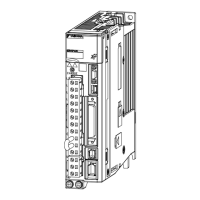
Do you have a question about the YASKAWA E-7-Series SGD7S and is the answer not in the manual?
| Series | E-7-Series |
|---|---|
| Control Method | Vector control |
| Protection Class | IP20 |
| Type | SGD7S |
| Communication Interface | EtherCAT, MECHATROLINK-III |
| Operating Temperature | 0°C to 55°C |
| Protection Features | Overcurrent, overvoltage, undervoltage, overload, overheating |
| Ambient Temperature | 0°C to 55°C |
| Storage Temperature | -20°C to 65°C |
| Vibration Resistance | 5.9 m/s² (0.6G) at 10-55Hz |
| Rated Output Current | Varies by model |
| Output Power | Varies by model |
Provides an overview of the Σ-7 series SERVOPACKs designed for high-speed, high-precision positioning.
Explains how to read the basic information provided on the SERVOPACK nameplate, including model and ratings.
Identifies and describes the main parts and connectors of the SERVOPACK unit.
Details on interpreting SERVOPACK and Servomotor model numbers for correct selection.
Lists compatible combinations of SERVOPACK models with Rotary, Direct Drive, and Linear Servomotors.
Lists the functions provided by SERVOPACKs and refers to their respective pages for details.
Provides detailed ratings and specifications for various SERVOPACK models, including electrical and environmental conditions.
Illustrates the internal block diagrams and connections for different SERVOPACK models.
Details the external dimensions, mounting hole diagrams, and connector specifications for SERVOPACKs.
Provides wiring examples for connecting SERVOPACKs to rotary servomotors, linear servomotors, and host controllers.
Outlines crucial precautions for installing the SERVOPACK, including environmental considerations and heat/vibration sources.
Describes the different mounting types (base, rack, duct-ventilated) and the correct vertical orientation for SERVOPACK installation.
Provides detailed dimensions for mounting holes required to securely mount the SERVOPACK to a surface.
Specifies the required intervals and spaces around the SERVOPACKs for proper cooling and installation.
Explains how to check the operating conditions of the SERVOPACK in its installation environment using monitor parameters.
Details the derating rates applicable for SERVOPACKs at higher surrounding air temperatures or altitudes.
Specifies the installation conditions used for EMC certification testing to ensure compliance.
Provides general precautions, countermeasures against noise, and grounding procedures for wiring SERVOPACKs.
Presents basic wiring diagrams illustrating connections for power supply, servomotors, I/O signals, and safety functions.
Details terminal symbols, names, and wiring procedures for connecting AC and DC power supplies to the SERVOPACK.
Explains terminal symbols, pin arrangements, and wiring procedures for connecting SERVOPACKs to rotary, direct drive, and linear servomotors.
Describes the names, functions, and pin arrangements of I/O signal connectors (CN1) for default and custom allocations.
Provides information on wiring safety function signals, including HWBB inputs and EDM1 outputs.
Details connections for serial communications, computer interface, and analog monitor connectors.
Explains parameter classifications, notation, and methods for setting parameters using SigmaWin+, Panel, or Digital Operator.
Describes how to set the control method (speed, position, torque) using Pn000 parameter.
Details settings for AC or DC power supply input selection for the main and control circuits.
Explains how SERVOPACKs automatically detect connected rotary or linear servomotors via CN2.
Describes the function of the /S-ON signal and settings for keeping the servo ON continuously.
Explains how to reverse Servomotor rotation direction by changing settings without altering reference signal polarity.
Details how to set the scale pitch of a linear encoder in Pn282 when using a Serial Converter Unit.
Explains how to use SigmaWin+ to write motor parameters to the linear encoder for operation.
Describes how to select the phase sequence to match the encoder's count-up direction for forward motor movement.
Explains how to specify whether a connected Linear Servomotor has a polarity sensor by setting Pn080.
Provides information on detecting the polarity of a Linear Servomotor when it does not have a polarity sensor.
Details overtravel parameters and related settings for stopping the Servomotor in response to limit switch signals.
Explains the use of a holding brake to maintain the position of the machine part when the SERVOPACK is OFF.
Describes the methods for stopping the Servomotor when the servo is turned OFF or an alarm occurs.
Covers setting the threshold for detecting overload alarms and warnings to prevent Servomotor overheating.
Explains how to set the electronic gear ratio using Pn20E and Pn210 to convert travel distances to pulses.
Provides procedures and precautions for resetting the absolute encoder's multiturn data and clearing related alarms.
Describes how to set any position as the origin for absolute linear encoders.
Details how to set the regenerative resistor capacity consistent with the allowable capacity of external resistors.
Explains how to change I/O signal allocations to connector pins and set polarity for some pins.
Describes how power supply to the motor is maintained during momentary power interruptions via Pn509.
Explains the SEMI F47 function for limiting output current when DC main circuit power supply voltage drops.
Details how to set the maximum speed of the Servomotor using Pn316 (Rotary) and Pn385 (Linear).
Covers speed control using analog voltage reference, including V-REF input and gain settings.
Explains position control using pulse train reference, including reference pulse forms and input filters.
Describes torque control performed by inputting a torque reference with an analog voltage.
Details the encoder divided pulse output signals and phase forms for rotary and linear servomotors.
Explains how to set motor speeds in parameters and perform speed control using external input signals.
Describes how to specify switching between two control methods using Pn000 parameter.
Details the four methods available for limiting the output torque of the Servomotor.
Provides information on absolute encoders, their usage, and data structures.
Explains the structure of position data and output ports for absolute linear encoders.
Describes how to reset the SERVOPACK internally using software for alarm and parameter changes.
Explains how to automatically adjust vibration detection levels for precise detection of alarms and warnings.
Details how to adjust the motor current detection signal offset to reduce torque ripple.
Provides the procedure for trial operation, covering installation, wiring, confirmations, and power ON.
Lists essential checks for safe and correct trial operation of the SERVOPACK and Servomotor.
Explains how to use jogging for trial operation of the Servomotor without connecting it to the host controller.
Details the operation sequence for trial operation using a host controller for speed and position control.
Provides the procedure for trial operation with both the machine and Servomotor connected.
Describes convenient operations like Program Jogging and Origin Search for use during trial operation.
Provides an overview of tuning, its functions, and a flowchart for the tuning procedure.
Explains methods for monitoring machine operation status and SERVOPACK signal waveforms during tuning.
Outlines essential precautions for safe tuning, including overtravel, torque limits, and position deviation settings.
Describes the tuning-less function for obtaining stable response without servo tuning, including application restrictions.
Details the calculation and estimation of the moment of inertia ratio, used in other tuning functions.
Explains autotuning performed automatically by the SERVOPACK for machine characteristics without host controller input.
Describes autotuning that automatically makes optimum adjustments based on operation references from the host controller.
Explains how to manually adjust servo gains during operation using speed or position reference from the host controller.
Details anti-resonance control for suppressing continuous vibration frequencies effectively.
Describes vibration suppression for transient vibration at low frequencies, effective when notch filters are not.
Covers functions like Gain Switching, Friction Compensation, and Current Control for adjustments after autotuning.
Explains how to manually tune servo gains to increase SERVOPACK response characteristics, like reducing positioning time.
Covers tools for measuring machine frequency characteristics and setting notch filters, including Mechanical Analysis and Easy FFT.
Lists items that can be monitored regarding SERVOPACK, Servomotor, Encoder, and Option Modules.
Explains how to display and interpret the System Monitor, Status Monitor, and Motion Monitor windows.
Describes using SigmaWin+ trace function or measuring instruments to monitor waveforms and signal status.
Explains how to display installation environment and service life prediction monitor dialog boxes.
Provides an example of a system configuration using an externally installed encoder for position feedback.
Details the commissioning procedure for ensuring correct operation with semi-closed and fully-closed loop control.
Describes parameter settings related to fully-closed loop control, including motor direction and encoder settings.
Explains the purpose of safety functions in reducing risks and increasing machine safety.
Details the HWBB safety function for shutting off motor current via a hardwired circuit.
Explains the EDM1 signal for monitoring HWBB failures and its output signal specifications.
Provides connection examples and failure detection methods for using safety functions.
Outlines the validation tests required for HWBB after wiring, during commissioning, maintenance, or replacement.
Provides the procedure for connecting a safety function device to the SERVOPACK's CN8 connector.
Describes annual inspections and guidelines for replacing parts like cooling fans, capacitors, and relays.
Lists all possible alarms, their meanings, stopping methods, reset possibility, and alarm code output.
Provides a list of warnings, their meanings, and causes of warnings before alarms occur.
Offers guidance on troubleshooting Servomotor issues based on operation and conditions, including possible causes and corrections.
Describes the Panel Operator's display and keys, including how to change modes and interpret status displays.
Explains procedures for setting numeric parameters and selecting functions using the Panel Operator.
Details how to monitor SERVOPACK status, reference values, and I/O signals using monitor displays.
Covers the use of various utility functions (Fn) on the Panel Operator for setup, tuning, and monitoring.
Provides a comprehensive list of SERVOPACK parameters, including their settings, applicable motors, and references.
Offers a table format to record the settings of various parameters for future reference and documentation.
Provides example connection diagrams for various host controllers like MP2000, Yokogawa, and OMRON.
Lists utility functions and monitor display functions used by SERVOPACKs and their corresponding names in SigmaWin+.
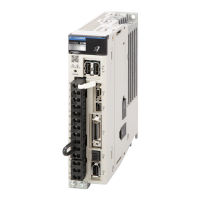
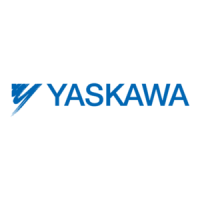




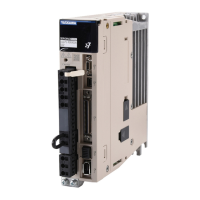
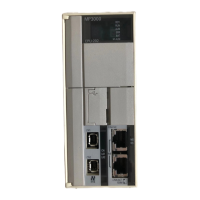
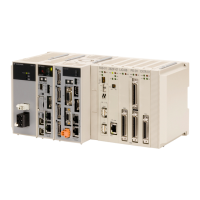



